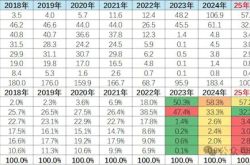Is Confidence Verification Crucial for Autonomous Driving?
![]() 11/12 2025
11/12 2025
![]() 561
561
Recently, I stumbled upon the concept of confidence verification. As someone relatively new to the autonomous driving industry, upon hearing this term, Zhijia Zuiqianyan was eager to delve deeper. Today, Zhijia Zuiqianyan aims to briefly discuss confidence verification and its significance in autonomous driving with all of you. Should there be any inaccuracies, please do not hesitate to leave a comment and correct me.

Why Is Confidence Verification a Critical Issue?
Confidence verification pertains to assessing the reliability of an autonomous driving system's "self-perceived correct" judgments. In rule-based autonomous driving solutions, the program's outputs can be validated through explicit rules and boundary conditions. However, with the growing utilization of deep learning models in autonomous driving, these models generate probability scores for input data such as images or radar point clouds. These scores do not denote the "true probability of occurrence" but merely represent the likelihood of a particular scenario.
The model might fail to detect erroneous identifications altogether or may exhibit high confidence even when making incorrect judgments in scenarios outside the training data (e.g., extreme weather conditions, unseen objects). The purpose of confidence verification is to identify and rectify such "blind confidence," ensuring that the system can implement appropriate degradation or protective measures when faced with uncertainty.
The importance of confidence verification is undeniable. If the system underestimates risks at critical moments (i.e., high confidence but incorrect judgments), it could lead to collision accidents. Furthermore, regulations, certifications, and insurance all necessitate transparency into the system's performance under uncertain conditions, monitoring mechanisms, and how risks are kept manageable. Without rigorous confidence verification, autonomous driving systems lack explainable safety boundaries, making it challenging to pass pre-market and operational reviews.

What Is Confidence?
The concept of confidence verification may appear straightforward, but it encompasses multiple facets. The first is "probability output," which refers to the scores directly generated by the model. The second is "calibration," which pertains to whether the probability values output by the model align with the frequency of events occurring in the real world. The third is "types of uncertainty," which can be categorized into "aleatoric uncertainty" attributable to observational noise and "epistemic uncertainty" arising from insufficient model knowledge or encounters with out-of-distribution situations.
Concepts can be abstract and challenging to grasp, so let's consider an example. On a rainy day, when camera images are blurry, this falls under aleatoric uncertainty. However, if the vehicle has never encountered a scenario where a camel crosses the road, that is epistemic uncertainty. This is not due to inadequate model training but rather because the scenario itself is extremely rare or entirely unfamiliar. Confidence verification must account for both types of uncertainty. The former can be mitigated through improved sensor fusion and noise modeling, while the latter requires detecting out-of-distribution samples, expanding training data coverage, or enhancing through conservative strategies.

The Role of Confidence Verification in Autonomous Driving Systems
Confidence verification is a cross-cutting capability that permeates perception, prediction, planning, and decision-making in autonomous driving systems. At the perception level, detected targets are accompanied by a confidence score, and it is crucial to verify whether this score is reliable to decide whether to include the target in the planning logic, track it, or trigger a warning. Targets with low confidence may be flagged as suspicious objects, necessitating the system to adopt a more conservative trajectory planning or increase the frequency of reviews.
In trajectory prediction and behavior prediction, confidence serves as a measure of future uncertainty. A high-confidence single prediction indicates that the model has a clear pre-judgment of the future trajectory, enabling the planning module to respond relatively proactively. However, when the prediction distribution is dispersed and confidence is low, the planning module needs to accommodate more possibilities or trigger conservative strategies such as deceleration or increasing the following distance. Confidence verification ensures that the distribution output by the prediction module is credible, allowing the planning layer to make appropriate risk trade-offs accordingly.
At the decision-making and control level, confidence is directly related to runtime monitoring and takeover logic. Many systems set a threshold, and when the overall system's uncertainty exceeds a certain limit, the vehicle may request manual takeover, switch to a more conservative driving mode, or perform a safe stop. Confidence verification aims to demonstrate that these threshold settings and response strategies are reasonable and perform effectively under various boundary conditions.
Confidence verification also forms the foundation for achieving closed-loop data collection and model iterative upgrades. By recording events with low confidence or significant prediction deviations online, targeted collection of these long-tail data can be conducted, annotated, and utilized for model retraining, thereby gradually enhancing the model's robustness.

The Challenges of Confidence Verification
The most daunting aspect of conducting confidence verification primarily arises from long-tail problems. Many scenarios where system verification fails are due to data being extremely rare or entirely absent from the training data. How to utilize limited data to demonstrate that the system can still operate with acceptable risks in these long-tail scenarios is a core challenge. Traditional statistical verification necessitates a large number of samples to provide high-confidence coverage guarantees, but collecting real-world extreme samples is not only costly but also highly dangerous. Therefore, simulation, synthetic data, and systematic boundary scenario construction can be employed to supplement verification.
Another challenge of confidence verification lies in the difficulty of balancing confidence thresholds with business considerations. If the threshold is set too loosely, the system may frequently misjudge unsafe situations as safe, thereby increasing the risk of accidents. Conversely, if the threshold is set too conservatively, it may lead to frequent system degradation and frequent requests for manual takeover, severely impacting the user experience. Finding the optimal balance between safety, usability, and cost requires extensive A/B testing, long-term data monitoring, and interdisciplinary joint decision-making. Moreover, confidence thresholds are not static; they need to be continuously adjusted with model updates, changes in data distribution, and sensor modifications. Therefore, confidence verification must be an ongoing process integrated into the continuous integration/continuous deployment workflow.

The Impact of Confidence Verification
The impact of confidence verification on the autonomous driving industry is profound, as it not only alters the trajectory of technological research and development but also influences compliance, business, and operational models. For R&D teams, it is imperative to incorporate uncertainty modeling and confidence assessment into the early stages of product design, rather than treating them as ancillary steps post-training. This entails that data strategies need to prioritize comprehensive scenario coverage, testing strategies should encompass a substantial number of scenario-based simulations, and system architectures must support runtime uncertainty monitoring and rapid recovery mechanisms for low-confidence events.
From a regulatory and certification perspective, confidence verification is becoming a pivotal basis for assessing the acceptability of autonomous driving systems. Regulatory agencies and standard organizations should pay greater attention to how systems handle uncertainty within and outside the specified operational design domain, how risks are disclosed, and what safety measures are implemented when the system encounters the unknown. Without transparent and verifiable confidence capabilities, autonomous driving products will struggle to meet compliance requirements and will face higher thresholds in terms of insurance and liability division.
From a commercial standpoint, confidence capabilities directly influence the range of available scenarios and deployment strategies for products. Transforming the model's "soft" probability outputs into "hard" safety guarantees enables manufacturers to deploy autonomous driving functions in a broader array of scenarios. Confidence verification also shapes after-sales and operational strategies, necessitating the establishment of continuous online monitoring, log auditing, and rapid iteration processes based on low-confidence events. For end-users, a robust confidence strategy can enhance the predictability of the experience and reduce negative experiences caused by frequent function degradation or takeovers.

Final Thoughts
Confidence verification is not a panacea for all issues, but it is an indispensable pathway for autonomous driving technology to transition from "appearing intelligent" to "being trustworthy." By quantifying, calibrating, and systematically verifying the model's confidence levels, engineering teams can better balance safety and usability in design, regulators can more reasonably assess the system's actual risks, and users can enjoy a more predictable and reassuring experience. While perfect confidence may not be attainable, a testable, provable, and continuously evolving confidence verification capability is undoubtedly a key support for autonomous driving to progress from the test site to large-scale commercial deployment.
-- END --







